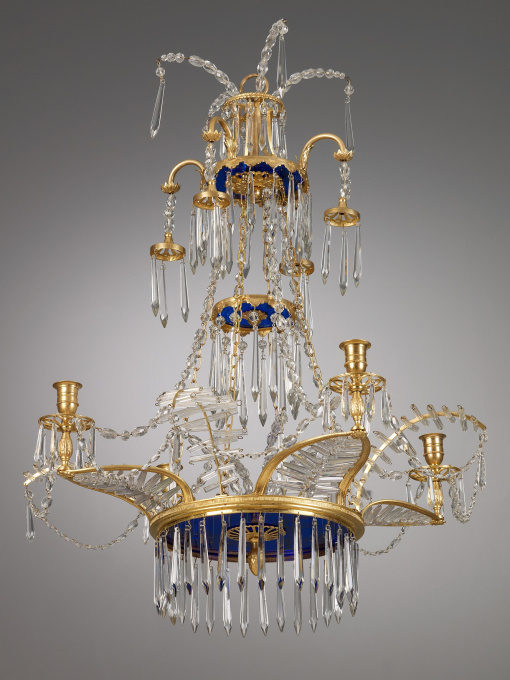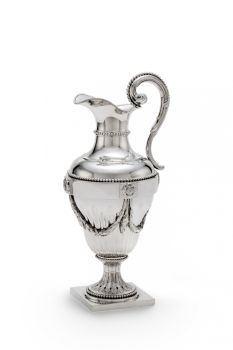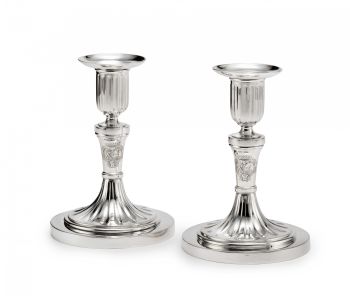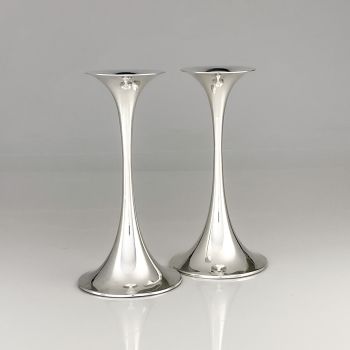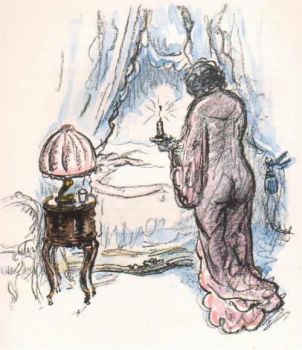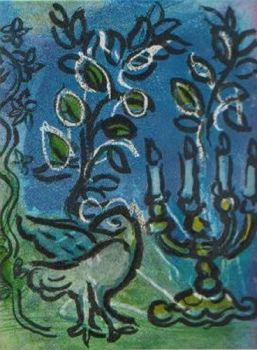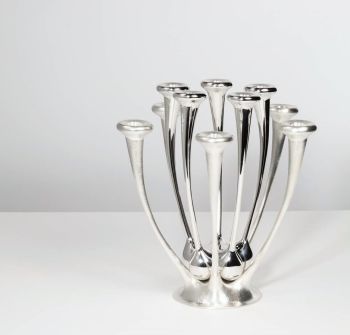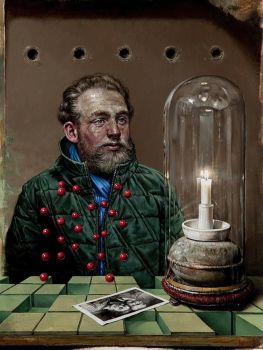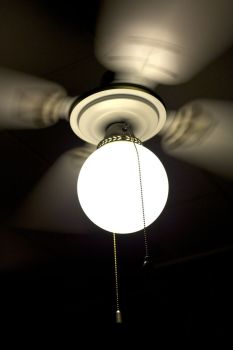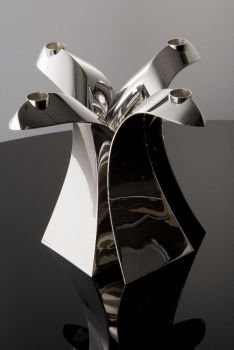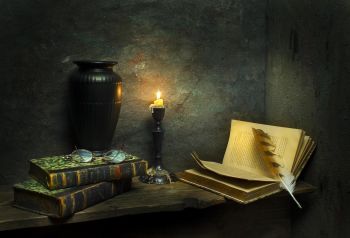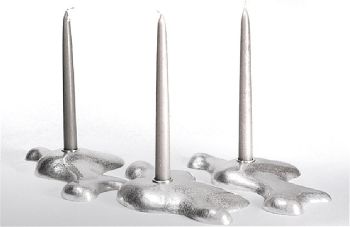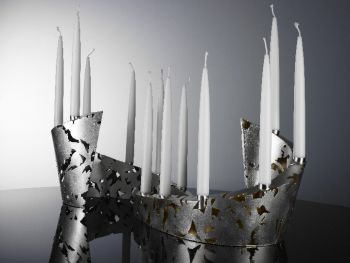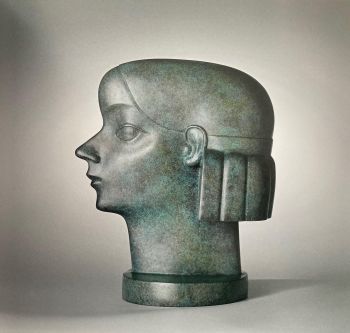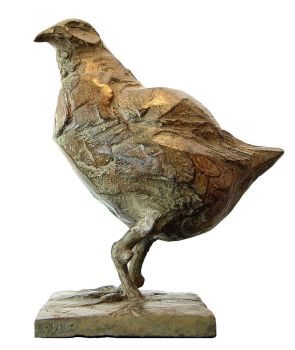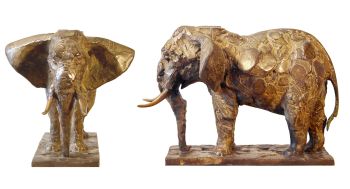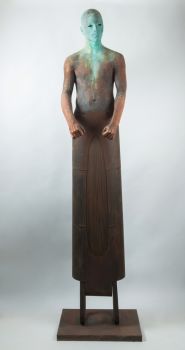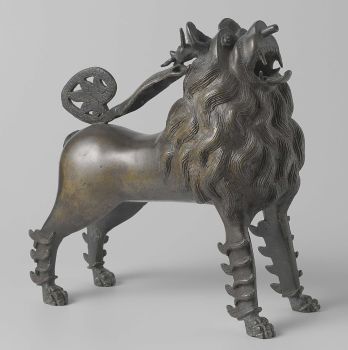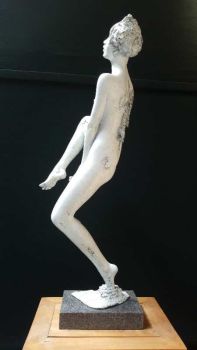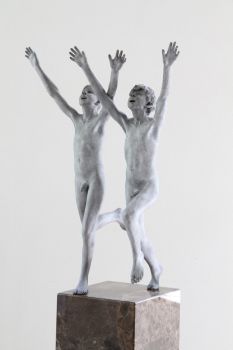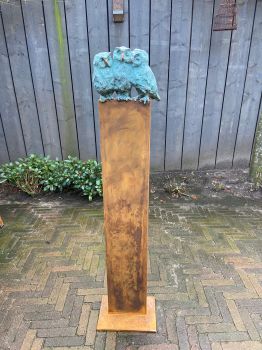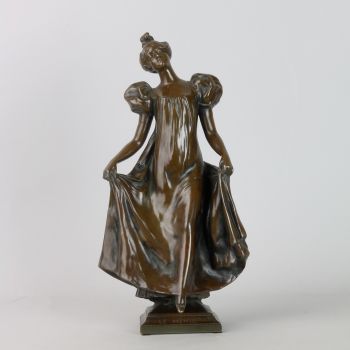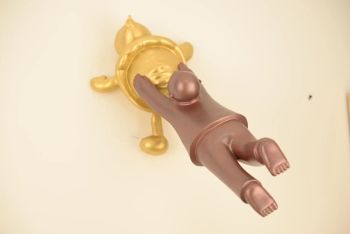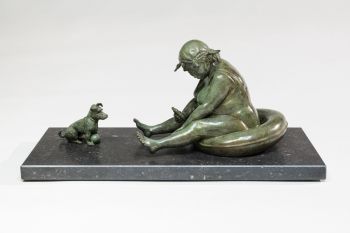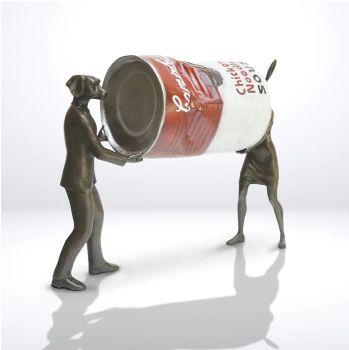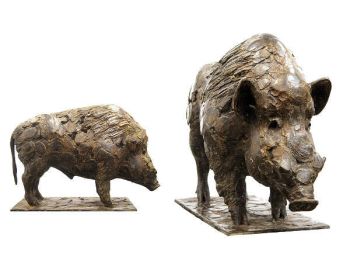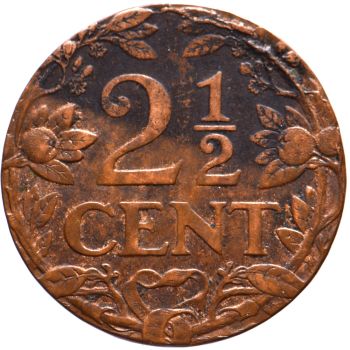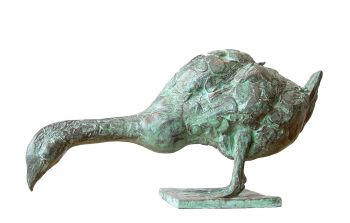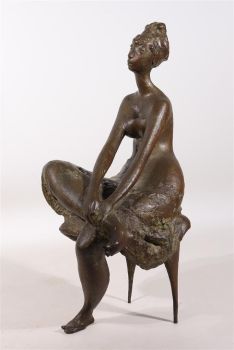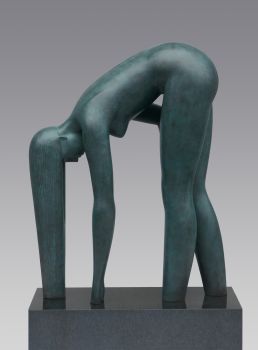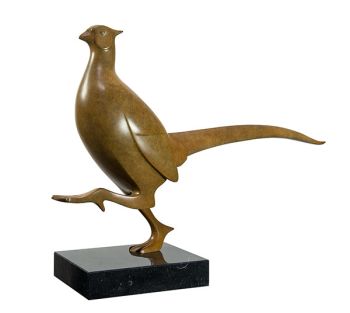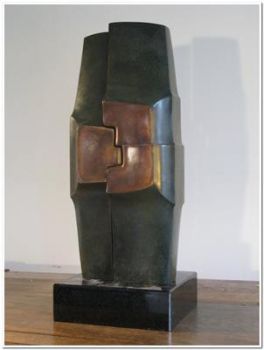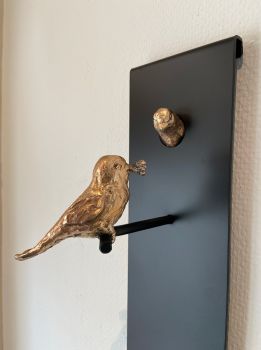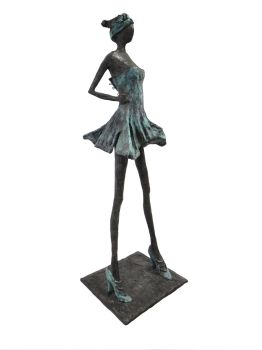German Chandelier, Dresdner Spiegelmanufaktur 1797
Unknown artist
GlassBronzeGoldCrystalMetalGiltGemstone
75 cm, ø 62 cm
Currently unavailable via Gallerease
- About the artworkA German chandelier with four lights manufactured by the Dresdner Spiegelmanufaktur. The construction of the chandelier consists of three panels in blue glass that are mounted in gilt-bronze rings. From the rings crystal ‘icicles’ hang down. The lower ring is fitted with four candleholders with bobêches and ornamental arms decorated with glass pipes. The three rings are held together with chains.
By the end of the 18th century architects started to design chandelier as an integral part of the interior. The chandeliers made around 1800 in specialized factories in Berlin (Werner & Mieth) and Dresden (Dresdner Spiegelmanufaktur) are the pinnacle of this development. The objects were made with the best materials available. Although protectionist measures of especially the Prussian authorities, dictated the use of indigenous materials, this chandelier is fitted with Bohemian glass, which was considered to be of the highest quality at the time. This chandelier of the Dresdner Spiegelmanufaktur was arguably made around 1797. In that very year a very similar model was advertised in the ‘Journal des Luxus und den Moden’ (Dezember 1797, p. 630, image 36). The laudatory description begins as follows:
“Den neuesten Gesmack in Form und verzierung der Kronleuchter zeigt die hierbey gelieferte Schöne Zeichnung eines solchen Leuchters, wie die Churfürtliche Sächsiche Spiegelfabrik zu Dresden, deren geshcmackvollen Arbeiten und schone Dessins wir schon mehrermale in unserem Journale rühmten, dergleichen anjetzt fertigt.”
[The newest taste in form and decoration of chandeliers is shown by the accompanying beautiful illustration of such a chandelier, as the Electoral Saxon Mirrorfactory of Dresden, whose tasteful work and beautiful design has repeatedly been praised in our journal, is manufacturing from now on]
The journal continues with an elaborate description of the chandelier, with particular attention to the colorful interaction of the bleu glass with the ‘crystal tears’. The reviewer of the journal praises the novelty of the use of chains instead of a central rod to connect the various parts of the chandelier, giving it a more airy appearance. The raving text concludes with the remark that the utmost tasteful design of the chandelier is very much recommended by conoisseurs.
(Journal des Luxus und Moden, Dezember 1797)
literature:
K. Klappenbach, Kronleuchter Mit Behang aus Bergkristall und Glas sowie Glasmarmkronleuchter bis 1810, Berlin 2001, pp. 49, 74, 102, 359. - About the artist
It might happen that an artist or maker is unknown.
Some works are not to be determined by whom it is made or it is made by (a group of) craftsmen. Examples are statues from the Ancient Time, furniture, mirroirs, or signatures that are not clear or readible but as well some works are not signed at all.
As well you can find the following description:
•“Attributed to ….” In their opinion probably a work by the artist, at least in part
•“Studio of ….” or “Workshop of” In their opinion a work executed in the studio or workshop of the artist, possibly under his supervision
•“Circle of ….” In their opinion a work of the period of the artist showing his influence, closely associated with the artist but not necessarily his pupil
•“Style of ….” or “Follower of ….” In their opinion a work executed in the artist’s style but not necessarily by a pupil; may be contemporary or nearly contemporary
•“Manner of ….” In their opinion a work in the style of the artist but of a later date
•“After ….” In their opinion a copy (of any date) of a work of the artist
•“Signed…”, “Dated….” or “Inscribed” In their opinion the work has been signed/dated/inscribed by the artist. The addition of a question mark indicates an element of doubt
•"With signature ….”, “With date ….”, “With inscription….” or “Bears signature/date/inscription” in their opinion the signature/ date/ inscription has been added by someone other than the artist
Artwork details
Related artworks
- 1 - 4 / 12
Reynier de Haan
An elegant Louis XVI Dutch Silver Monteith Bowl 1778
Price on requestJacob J. Roosjen SRI
1 - 4 / 7Unknown artist
A MARINE IVORY NETSUKE OF A DUTCHMAN HOLDING A CHINESE FAN18th century
Price on requestZebregs & Röell - Fine Art - Antiques
Unknown artist
A IVORY NETSUKE OF A DUTCHMAN HOLDING A COCKEREL18th century
Price on requestZebregs & Röell - Fine Art - Antiques
1 - 4 / 24- 1 - 4 / 11
- 1 - 4 / 24

